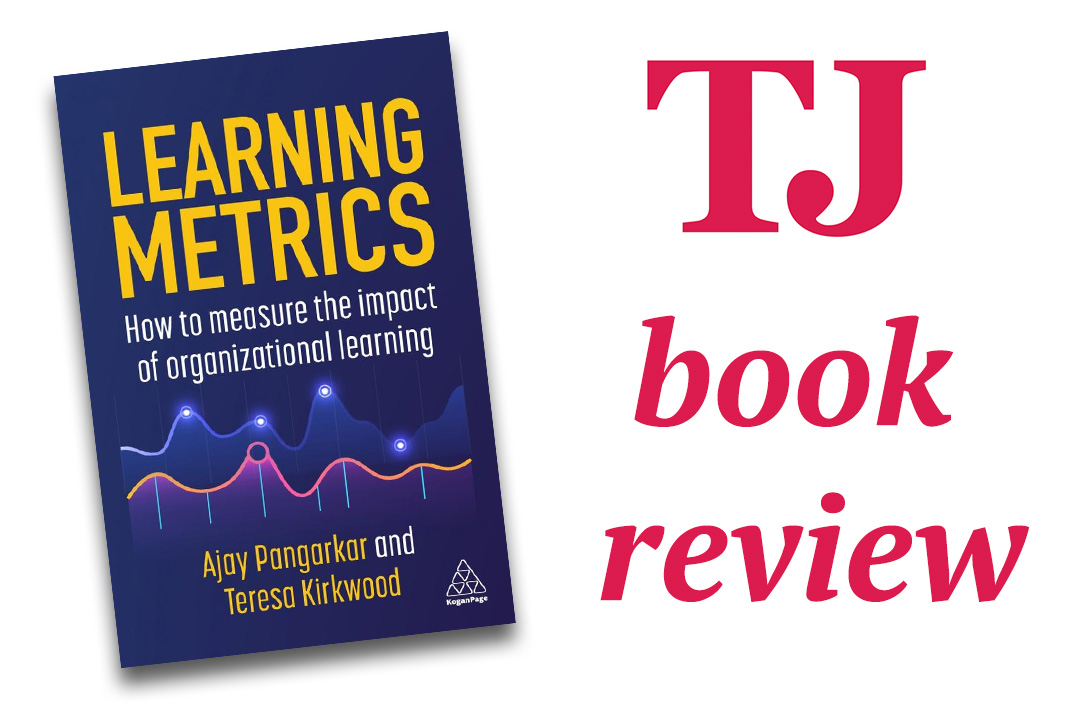Cathy Hoy on a ‘must-read’ for L&D practitioners committed to making a measurable impact on their organisations
Book: Learning Metrics: How to measure the impact of organizational learning
Author: Ajay Pangarkar, Teresa Kirkwood
In corporate learning and development, the ability to measure the impact of training interventions is more crucial than ever. Learning Metrics is a useful and practical resource, offering deep insights into the intricate (and often scary) world of learning metrics and their application for tangible business improvement.
“The book empowers professionals to make informed decisions about their L&D strategies”
Organisations are increasingly recognising that their ability to stay competitive relies on their workforce’s skills and adaptability. However, investing in training interventions without understanding their impact is like sailing a ship without a compass (which, I think we can agree, isn’t recommended!).
Learning Metrics demystifies the process of evaluating training interventions, presenting a clear framework for L&D practitioners and leaders, to assess not just the immediate outcomes of learning initiatives but also their long-term impact on business performance.
By offering deep insights into how to measure changes in knowledge, skill levels, employee behaviour and, ultimately, organisational results, the book empowers professionals to make informed decisions about their L&D strategies.
Navigating the path to strategic alignment
From the outset, the introduction lays a solid foundation, articulating compelling reasons why measuring learning impact is not just beneficial but essential for aligning L&D efforts with organisational goals. The promise of what to expect from the book, coupled with practical advice on how to approach its content, sets the tone for a highly informative read… if a little heavy for a Sunday morning.
The authors navigate the relationship between operational and learning metrics, illustrating how L&D initiatives can (and should) be strategically aligned with business objectives, which is music to my ears! This section is particularly valuable for practitioners looking to operationalise their mission by understanding and leveraging organisational metrics.
Real-world examples
The book has a pragmatic approach to applying learning metrics. Through several case studies, the authors demonstrate how these metrics can be used to achieve strategic results, offering readers real-world examples of successful implementation. The case studies enrich the book and form a practical guide for practitioners looking to replicate similar successes within their own organisations.
The discussion around participant engagement metrics is another highlight for me, providing readers with a comprehensive toolkit for measuring both quantitative and qualitative aspects of engagement. This is critical for ensuring that learning initiatives resonate with participants and achieve desired outcomes.
The authors emphasise the critical role of continuous improvement and sustainable growth in today’s business environment, positioning workplace learning as a central element to achieving these goals. It reinforces the importance of leadership in creating an environment that encourages knowledge enhancement, skills development, and continuous innovation among employees.
Championing participant engagement
For me, the concept of participant engagement as a key factor determining the effectiveness of workplace learning is paramount and something I’m very passionate about. I often speak about this when I talk about marketing learning, but I hadn’t expected to read about it in a book about metrics!
The authors, quite rightly, challenge the traditional model of passive learning by advocating for a shift towards a more interactive, collaborative approach. Transforming employees from receivers of information into active participants in their development journey.
Moving beyond knowledge acquisition
The chapters in the middle delve into learning retention, employee performance, and on-the-job behaviour, offering insightful analysis on the significance of these factors in driving business improvement.
This section of the book outlines the second level in the Kirkpatrick Four Levels of Evaluation framework, which is a widely respected method for gauging the efficacy of training programmes. Specifically, Level 2 focuses on “learning” and aims to quantify the extent to which delegates have gained new knowledge, skills, or attitudes as intended by the programme. The question it aims to answer is whether the participants actually learnt what they were supposed to learn.
However, as the authors point out, the acquisition of knowledge and skills, while essential, does not automatically lead to their effective application in the workplace. This acknowledgment highlights the inherent limitation of stopping the evaluation process at Level 2, a common problem.
Bridging learning analytics and financial performance
The book progresses into learning analytics and its relation to financial performance, bridging the gap between L&D and financial reporting (gulp). This is evidence of the author’s deep understanding of the business aspect of learning, urging L&D practitioners to adopt a more financially savvy approach to measuring performance… I couldn’t agree more!
The concluding chapters don’t fall short either, focusing on organisational impact and aligning with management’s expectations are a masterclass in strategic L&D management! By deconstructing the value chain and advocating for a closer alignment with stakeholder expectations, the book provides a roadmap for L&D professionals to elevate their impact and secure their place at the strategic table.
A comprehensive resource
Learning Metrics is great read, full of insights, strategies and actionable advice. Its blend of theoretical frameworks, practical case studies and strategic guidance makes it a must-read for L&D practitioners committed to making a measurable impact on their organisations.
I have a feeling this book will become highly influential in the field of L&D. Keep an eye out – it’s poised to make waves in the industry!




